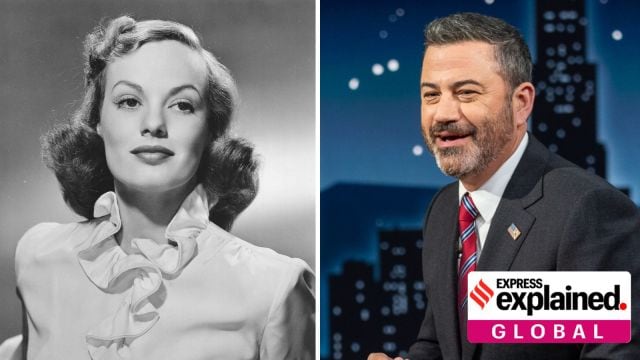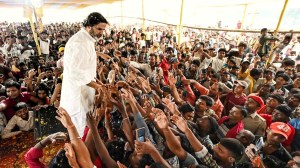Following reports that Disney’s ABC pulled US comedian Jimmy Kimmel’s late-night talk show off the air indefinitely on Thursday (September 18), President Donald Trump reacted with a message of celebration, as well as foreboding.
“Great News for America: The ratings challenged Jimmy Kimmel Show is CANCELLED. Congratulations to ABC for finally having the courage to do what had to be done. Kimmel has ZERO talent, and worse ratings than even (Stephen) Colbert, if that’s possible. That leaves Jimmy (Fallon) and Seth (Meyers), two total losers, on Fake News NBC. Their ratings are also horrible. Do it NBC!!!” he wrote.

Kimmel’s cancellation followed his comments about the killing of conservative activist Charlie Kirk. The axing of The Late Show with Stephen Colbert in July this year, reportedly due to criticisms of the Trump administration, raised questions about free speech protections that US comedians have long enjoyed. It further put a decades-old TV institution, the late-night talk show, under unprecedented scrutiny from the President himself.
Story continues below this ad
In the United States, late-night shows have been a mix of entertainment and politics, with even Presidents often appearing as guests. They have inspired spin-offs globally, including in India. How have they endured through the years, and what challenges have they faced of late?
Birth of late-night TV
Variety shows featuring a mix of elements, including comedy bits and musical performances, have long been a feature of American TV. A major inspiration was live entertainment and the circus, which were important sources of entertainment in the pre-TV era.
Late-night shows began airing after 11 pm and were filmed quite close to the air date. While the slot meant limited audiences, they were often in the young to middle-aged adults demographic that mattered to advertisers.
The first programme in the genre was pioneered by actress Faye Emerson, who in 1949 launched The Faye Emerson Show that ran for about two years. Former TV executive Maureen Mauk, who worked on a thesis on Emerson, told Deadline that her show was unusual for its time, featuring topics like “U.S. relations with China, war with Korea, nuclear arms, and equality for women with guests”. The next day, it could have clowns and comedy, covering a wide set of audiences, where hopefully everyone would find something that appealed to them.
Host-anchored machinery
Story continues below this ad
In the ’50s and ’60s, the likes of Jack Paar and Johnny Carson helped popularise the format. A Time Magazine article in 1958 described Paar as “a first-rate, refreshingly different TV performer who in a single year has come out of nowhere and made a huge hit of a special kind of entertainment. What Paar brings into American living rooms five nights a week is both more and less than a comedy, variety or chatter show — it is a special show business blend…”
Carson further put his own stamp on his show, which followed Paar’s, with his dry sense of humour. The host, with his name in the show title, would eventually impact their shows’ structure and tone to a great extent. Carson’s success was such that in his prime, he was a star in his own right. Jimmy Kimmel once told the LA Times, “Maybe Frank Sinatra would show up and he and Johnny were equals, but that’s it. I can assure you that if Taylor Swift is on my show, it does not feel like we’re equals.”
Political and cultural heavyweights lent further legitimacy to these shows. In 1992, then presidential candidate Bill Clinton appeared on the Arsenio Hall Show and played the saxophone while wearing sunglasses, aiding his public image as a youthful politician. Barack Obama, Kamala Harris, and even Donald Trump have made appearances on late-night shows.
The success translated into spin-offs, such as Indian actor Shekhar Suman’s show Movers & Shakers in the 1990s, which had celebrity interviews and monologues about politics of the day.
Viewership challenges
Story continues below this ad
Today, most people know of late-night TV through viral video clips of celebrities and hosts (including Colbert, Fallon and Meyers, and the likes of Conan O’Brien and David Letterman in the past). And that is representative of the structural problems that the genre now faces.
Viewing habits are increasingly shifting away from TV and fixed time slots, thanks to the ease and flexibility of the streaming era. The fascination of seeing celebrities in a more relaxed setting is also somewhat dimmed, with their social media accounts and podcasts filling in that gap.
Some have also blamed increasingly political takes on such shows for their decline, but that has to do with the polarised nature of American society, as well. Ultimately, all of it has meant that late-night is no longer central to TV entertainment, with significant financial challenges predating the more recent political issues under Trump.








































